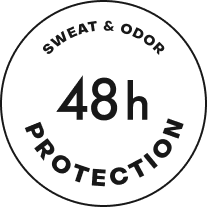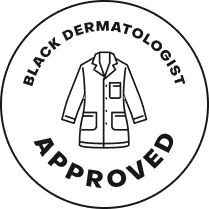Antiperspirant vs Deodorant: Which One Is Right for You?

Navigating the world of personal care products can sometimes feel like a maze, especially when it comes to choosing between antiperspirant and deodorant. Understanding the key differences between these two products can help you make an informed decision that best suits your needs. Let's break down what each product does, how they work, and which one could be the perfect fit for you.
What is antiperspirant?
Antiperspirants are designed to reduce sweating. They work by temporarily blocking the sweat glands, which reduces the amount of sweat that reaches the skin's surface. The active ingredient in most antiperspirants is aluminum-based compounds, such as aluminum chloride or aluminum zirconium. These compounds form a temporary plug within the sweat duct, which stops the flow of sweat to the skin's surface.
What is deodorant?
Deodorants, on the other hand, are formulated to combat body odor. They don’t stop you from sweating but instead target the bacteria that cause odor when sweat interacts with your skin. Deodorants often contain antimicrobial agents to kill bacteria and fragrances that mask any unpleasant smells. Unlike antiperspirants, deodorants do not contain aluminum compounds.
Antiperspirant vs deodorant: Key differences
When it comes to antiperspirant vs deodorant, the differences might seem subtle, but they play a significant role in how these products address sweat and odor. Think of antiperspirants as the sweat blockers and deodorants as the odor fighters. Below, we’ll dive into these distinctions to help you decide which product aligns better with your lifestyle and personal care goals.
Function
- Antiperspirant: Reduces sweat production by blocking sweat glands.
- Deodorant: Neutralizes odor by targeting bacteria and adding fragrance.
Ingredients
- Antiperspirant: Typically contains aluminum-based compounds.
- Deodorant: Contains antimicrobial agents and fragrances, often free from aluminum.
Usage
- Antiperspirant: Ideal for those who experience heavy sweating and want to stay dry.
- Deodorant: Perfect for those who want to control odor without reducing sweat.
Choose the right product for your needs
When deciding between antiperspirant and deodorant, think about what matters most to you. If heavy sweating impacts your comfort or confidence, an antiperspirant might be your go-to. However, if you’re looking to avoid aluminum and want a product that not only tackles odor but also nurtures your skin with gentle, natural ingredients, a deodorant could be the perfect fit.
SheaMoisture deodorants: A perfect solution
SheaMoisture offers a range of deodorants specifically designed to meet the needs of melanin-rich skin. These deodorants are Black dermatologist approved and formulated without aluminum, parabens, or mineral oil. Infused with Fair Trade shea butter, they provide gentle, non-irritating care while nourishing your skin.
Benefits of SheaMoisture deodorants
- Even-toned and healthy underarms: Enriched with active ingredients like vitamin C, niacinamide, and retinol, SheaMoisture deodorants are designed to help reduce discoloration and support overall skin health.
- Gentle formulation: Made without harsh chemicals, aluminum, or baking soda, these deodorants are kind to sensitive skin, offering soothing care without irritation.
- Long-lasting freshness: Designed to keep you smelling fresh throughout the day, SheaMoisture deodorants provide reliable odor control with plant-based, natural ingredients.
- Moisture management: While aluminum-free, SheaMoisture deodorants incorporate cornstarch to help absorb sweat, reducing moisture and keeping you comfortable.
- Versatile options: SheaMoisture offers both stick and whole-body deodorants, providing solutions for underarm use or all-over freshness.
- Invisible application: The smooth, clear formula glides on easily and won’t leave white marks on your clothes, so you can move through your day with confidence.
- Ethical care: Crafted with Fair Trade shea butter, SheaMoisture deodorants core ingredients are sourced from women’s cooperatives in Ghana and Burkina Faso.
Frequently asked questions (FAQs)
Can I use deodorant and antiperspirant together?
Yes, you can use both deodorant and antiperspirant together. Applying antiperspirant first to reduce sweat and then deodorant to combat odor can provide comprehensive protection.
Are natural deodorants as effective as regular ones?
Natural deodorants can be just as effective in controlling odor, but they may not reduce sweat. Effectiveness can vary based on individual body chemistry and the specific formulation of the product.
Is aluminum in deodorant safe?
Aluminum is generally considered safe when used in antiperspirants, as it works by temporarily blocking sweat glands to reduce perspiration. However, some people choose to avoid aluminum-based products due to concerns about skin sensitivity or a preference for more natural alternatives. If you’re looking for a non-aluminum option, consider switching to a deodorant that combats odor while being gentle on your skin.
What is antiperspirant deodorant?
Antiperspirant deodorant typically combines the sweat-reducing benefits of antiperspirant with the odor-fighting properties of deodorant. However, some brands, like SheaMoisture, use the term to describe products that help manage moisture and odor without relying on aluminum-based compounds. These formulations often use natural ingredients like cornstarch to absorb sweat while keeping you fresh and confident all day.
Understanding the differences between antiperspirant and deodorant helps you pick the right product for your needs—whether you’re looking to stay dry, fight odor, or both. For those seeking a gentle, effective, and aluminum-free option, SheaMoisture deodorants offer the perfect solution. With plant-based ingredients and dermatologist-approved formulations, they go beyond odor control to care for your skin. Ready to upgrade your routine? Explore SheaMoisture’s range and find the deodorant that’s just right for you.
Dive into more self-care tips and how-to guides.
- slide 1
- slide 2
- slide 3










